Ask Ethan # 54: What is the earliest of the signals from the Universe?
- Transfer
Is there any way to look behind the barrier that exists before the moment of the life of the Universe, when it became transparent?
From early times, people - researchers and thinkers - wanted to find out the shape of their world. And we always did this by telling stories. It’s hard to let the truth get in the way of a good story.
- Adam Savage
After a short break, I am pleased to announce the return of our column. Every week we invite you to send your questions and suggestions to get a detailed answer to them, using all the possibilities of scientific knowledge. In connection with the long absence, I decided to give you three answers at once in one, thanks to Gerard, who asks:
Two astronomical questions:
1) the gravitational waves, in theory, should not be affected by the charge of matter. Is it possible that they will help us look beyond the time of the CMB? That is, to overcome the relic radiation barrier?
2) Photons are scattered by charged particles more strongly than neutral atoms of hydrogen. Will photons of certain frequencies scatter more than other charged particles?
And a personal question: how are you interested in astronomy? Because of the college teacher? Because of a relative? Because of going to the planetarium?
Let's start with the first two questions and the present time.

When we look at the Universe, it would be natural to think that what we see is limited only by how much light we can gather. If we need to detect a remote or dim object, we need to collect light from a larger area (a telescope with a larger aperture) or for a longer period of time (with a longer exposure time), and we will see it. We quite often use this technique - this is how we got pictures like Hubble Deep Field, Hubble Ultra Deep Field, and, most recently, the Hubble eXtreme Deep Field (below).
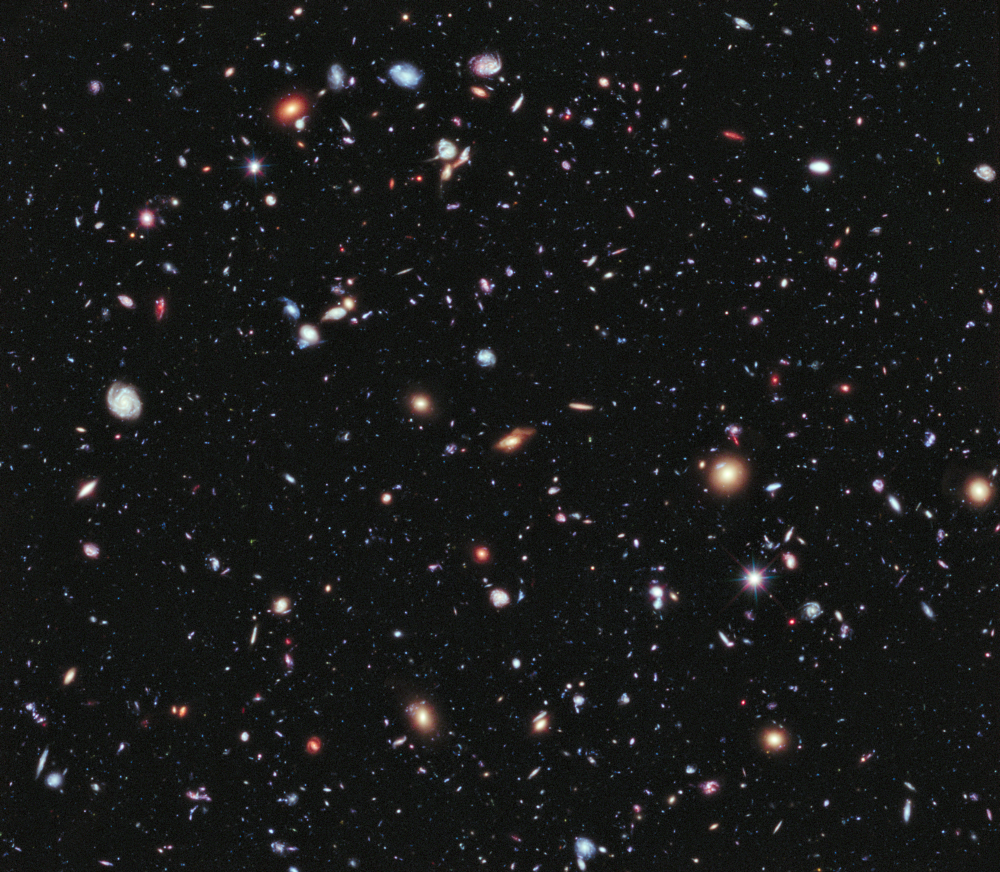
But we see these galaxies, albeit very distant, because the light reached through a line of sight through practically empty space to us without obstacles. Although neutral matter - gas and dust - absorb and re-emit light of certain wavelengths, the Universe was not always in a state where matter existed in stable and neutral states.
When the Universe was hotter, younger and denser, neutral atoms were not stable due to the high temperatures and high kinetic energies of the environment. Cosmos is already 13.8 billion years old, and it is cold and empty. But at the age of several hundred thousand years it was so hot and dense that neutral atoms could not arise! The universe was an ionized plasma of electrons, nuclei, photons, and other particles.
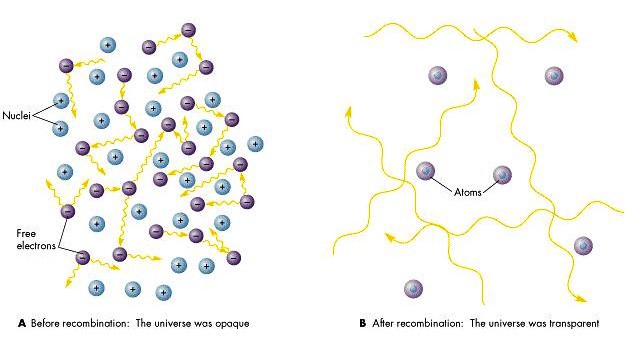
This is bad, because photons can tell little about that time. When the universe is ionized, the photons are very well scattered by free electrons. Gerard’s second question was whether the photons of certain frequencies are scattered more effectively than others. For energies typical of the Universe by a few thousand years old, high-frequency photons moved to lower ones when colliding with electrons (Compton scattering), low-frequency photons shifted to upper ones when colliding with high-energy electrons (Compton backscattering), but what is the overall collision probability? ?
About this tells the profile of Thomson:

It does not depend on the energy, frequency and wavelength of the photons, so the answer to the second question is: no, photons of all frequencies were scattered too often to store and transmit information about the times preceding the relic radiation.
But gravitational waves have no such problems.

Gravitational waves (or gravitons, if you like the description in terms of particles) are waves in the fabric of space itself. They move at the speed of light in a vacuum, but only distort space. They emit, but, as far as we know, do not absorb changes in the configuration of the masses.
And although we usually talk about the usual astrophysical sources emitting these waves - neutron stars, black holes, white dwarfs orbiting systems and supernovae - the moments leading up to the Big Bang should also have created them!
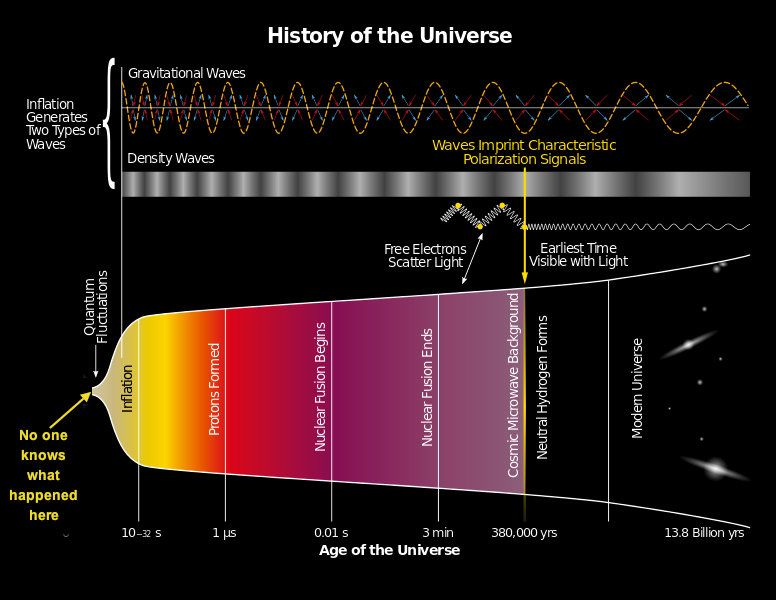
During the era of cosmic inflation that preceded and led to the Big Bang , there were two types of quantum fluctuations that occurred and spread throughout the Universe. One type - fluctuations in all existing vector, spin and scalar quantum fields. They led to density fluctuations, and later - to the emergence of regions, which then turn into stars, galaxies and clusters, or huge empty spaces. Another type was fluctuations in the tensor quantum fields of the Universe, which led to gravitational radiation. This radiation can, in principle, be detected by improved versions of ground-based or space-borne laser interferometers. Although they should be greatly improved compared with our current projects.

Inflation gives very specific classes of predictions of what the spectrum of gravitational waves created by it should be, and different models make predictions that differ in these details.
If the inflation model turns out to be wrong, the spectrum of gravitational waves born in the early Universe should be completely different.
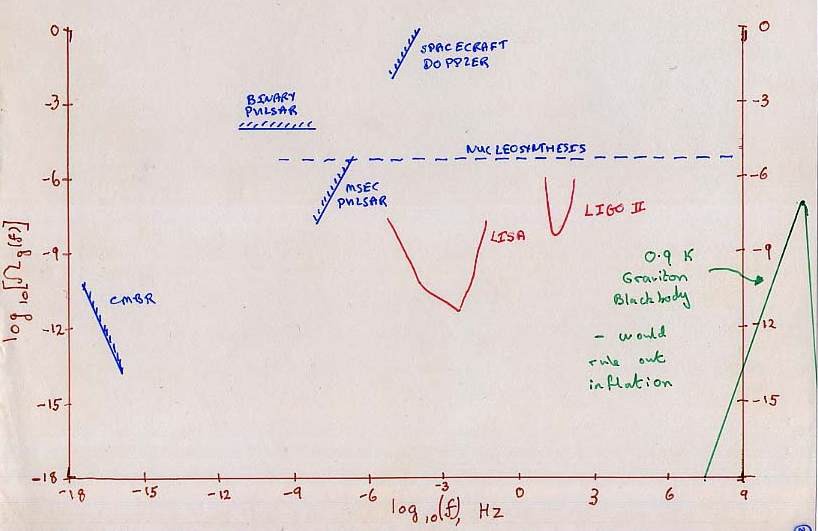
In any case, the following will be true:
- In the early Universe — with a very hot, dense, and expanding state, with energies higher than we can achieve in terrestrial or astrophysical laboratories — gravitational waves should have appeared
- These waves would not have changed, with the exception of the redshift, passing through matter, radiation and space, from the moment of their origin to the present day.
- Waves must have a specific set of amplitudes depending on frequencies. Whether there was inflation or not, measurements of background gravitational radiation should give us additional information about the birth of the universe.
If the theory of inflation is right, the only real variables, apart from a slight deviation of the spectrum, will be the amplitudes of tensor fluctuations from the early Universe.
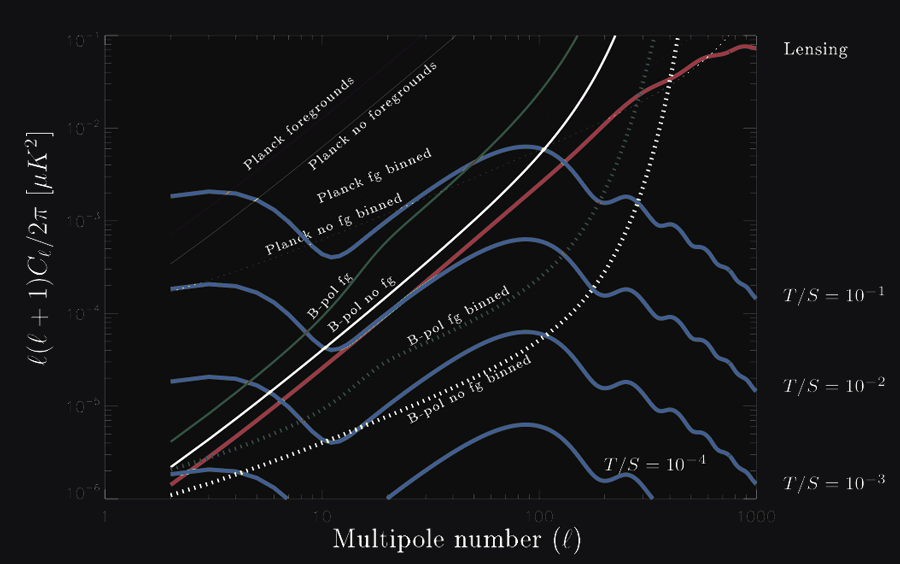
This will manifest itself in the microwave background radiation, and specifically in certain modes of polarization of photons. By accurately measuring these modes - and this is what BICEP2 and Planck are trying to do - we can learn more about cosmic inflation.
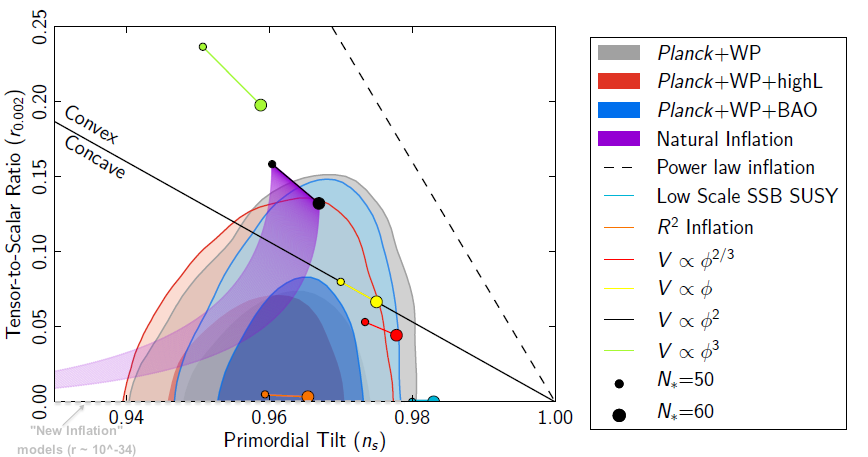
Therefore, Gerard, gravitational waves really open us a window to the very early stages of the development of the Universe. Just because modern technologies do not allow us to touch them, does not mean that we should not strive for this, and should not invest in the development of technologies that will allow us to directly probe the early stages of the life of the Universe. In principle, we should be able to achieve this in one generation, if appropriate resources are invested in it.
Concerning another question: what awakened my interest in astronomy. Two things happened to me when I was young, and they will probably surprise you. My story is different from most astronomers and astrophysicists.
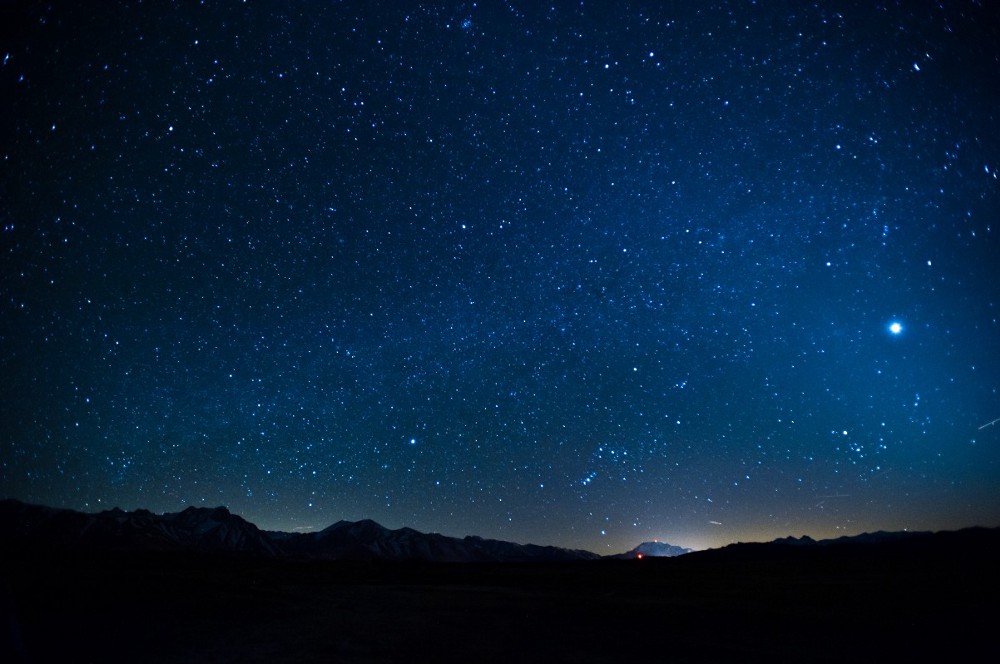
I have always loved hiking. For a child who grew up in New York and the surrounding area, the opportunity to touch the woods, mountains, bonfires and dark sky was rare for me, but at the same time the best of all the pleasures that I remember from childhood. In particular, I remembered one experience I had at the age of 11: I just lay in the field on my back with another boy of my age and his elder brother.
Then I could still see without glasses, and we could probably see several thousand stars. And we looked up, talked about everything and nothing, and did not hold back our imagination. It was very beautiful and it seemed to me that behind every fragment I saw there was some kind of story, and I really wanted to be a part of these stories. It is strange that nothing else - whether it was a visit to the planetarium, work with teachers, reading books, viewing images, using a telescope - did not give me such sensations. That experience, when I lay on my back and look into the dark, starry sky, gave me an unforgettable feeling.
A few years later, when I was 13-14 years old, in a summer camp, I swam in a boat at night, and I had a similar feeling. But at that time I already knew math better.
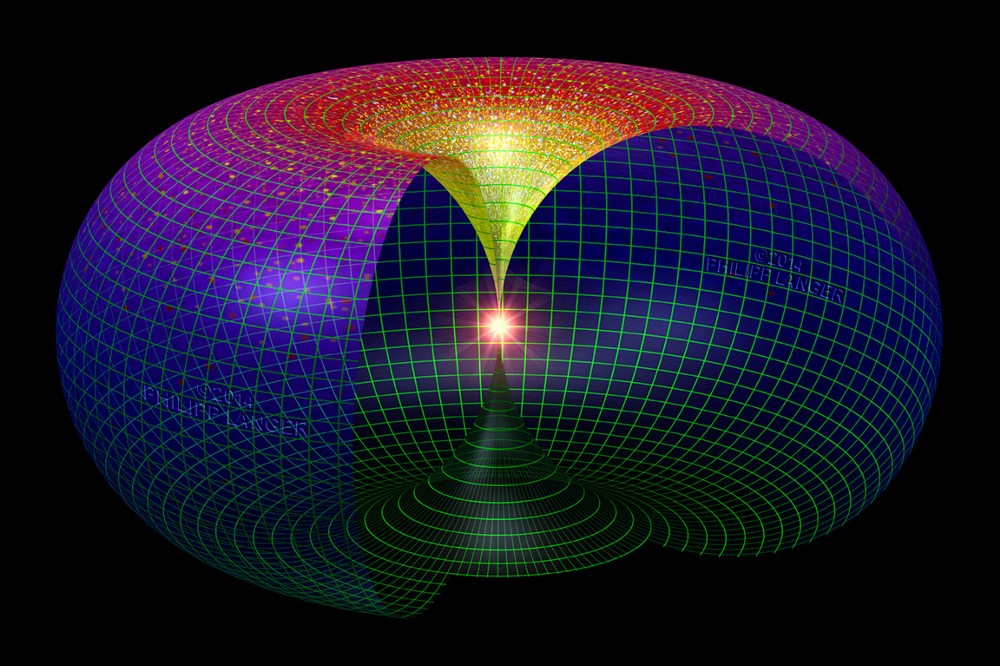
And it became interesting to me: if you travel by boat in one direction for a long time, you will return to the same place. And what happens if it is long enough to fly in one direction in space? Will you return to the same point?
When I looked at the sky and thought about the mathematical and physical structure of the Universe, about the higher dimensions and how the Universe looks on a large scale, I felt the same sense of wonder, curiosity and involvement. For lack of a better description, I felt that I needed to know about these things. Not that I saw something definite, learned something specific, or met some particular person — it was the very thought that lit the fire in me.
Life drove me in different directions, but I always returned to such questions and feelings, and — I know that this sounds silly — I feel that inside me there is an endless well of passion for this field of knowledge, which can never be emptied. And I discovered this with the help of two events that I described.
